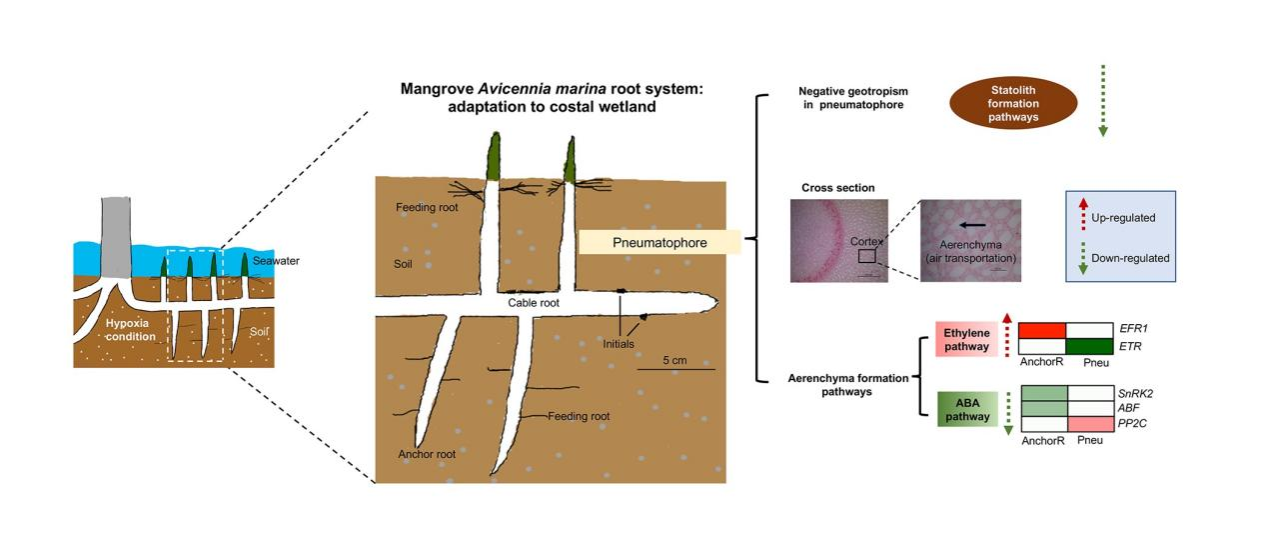Hao S.Q., Su W.Y. and Li Q.S.Q.. 2021. Science of the Total Environment, 757:143994.
The Avicennia marina is a mangrove species widely distributed throughout the tropical and subtropical intertidal wetlands. To adapt to adverse tidal waves and hypoxia environments, A. marina has evolved a sophisticated root system to better secure itself on the muddy soil with downward-grown anchor roots and upward-grown aerial roots, called pneumatophores. However, the process behind the development of a negative-gravitropic pneumatophore is not understood. Paraffin sections reveal anatomical differences among the shoots, anchor roots, and gas exchanging pneumatophores, clearly reflecting their functional diversions. The pneumatophore, in particular, contains abundant aerenchyma tissues and a thin cap structure at the tip. Transcriptomic analyses of both anchor roots and pneumatophores were performed to elucidate gene expression dynamics during the formation of pneumatophores. The results show that the plant hormone auxin regulates multiple different root initiations. The auxin related gene IAA19 plays a key role in pneumatophore development while the interaction of ethylene and abscisic acid is important for aerenchyma formation. Moreover, the molecular mechanisms behind pneumatophore anti-gravitropic growth may be regulated by the reduced strength of the statolith formation signaling pathway. These results shed light on the mechanistic understanding of pneumatophore formation in mangrove plants.

Figure 1. The actions of plant hormone auxin regulates pneumatophore and anchor root initiations. Pneumatophore negative geotropism may be due to less statoliths content. Ethylene and ABA play a key role aerenchyma formation in the A. marina root system.

